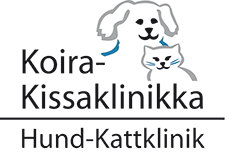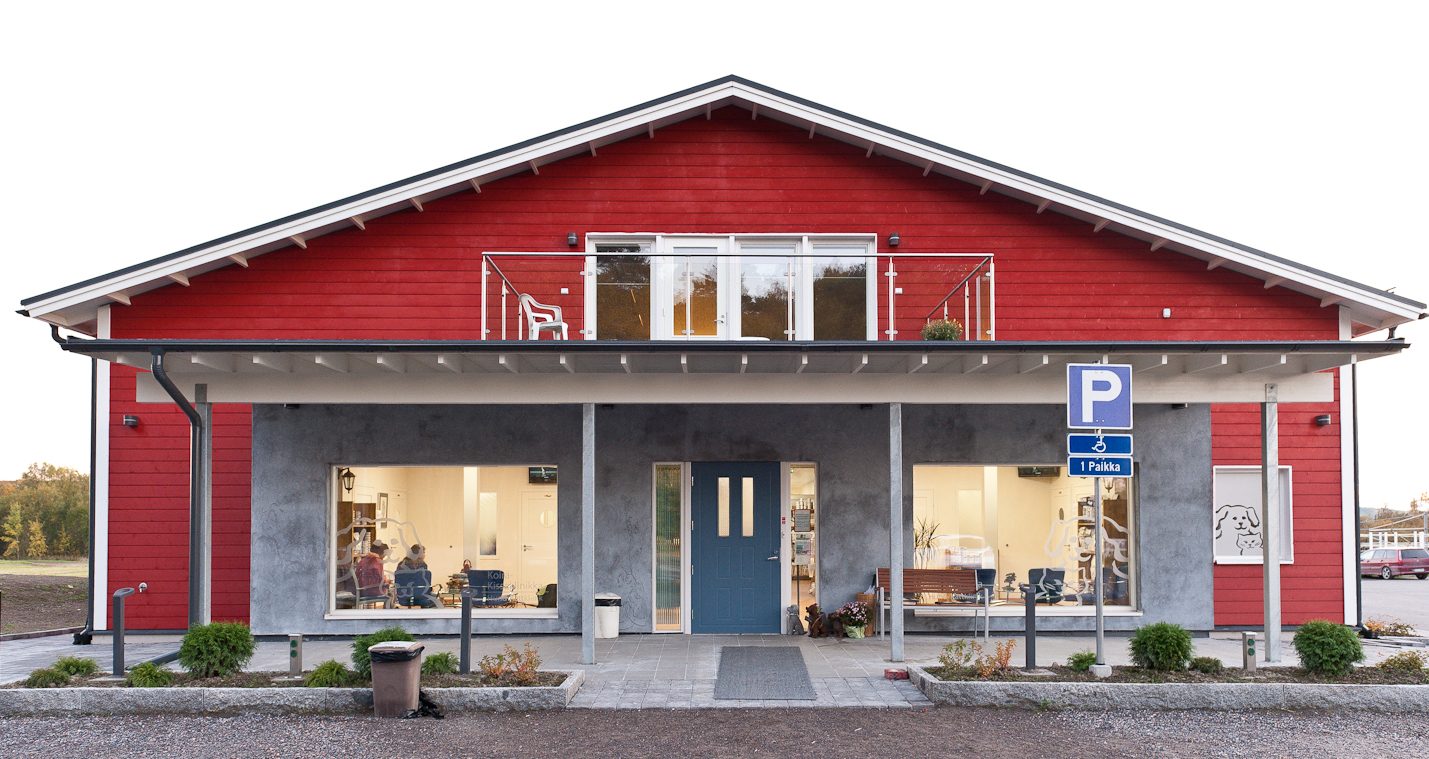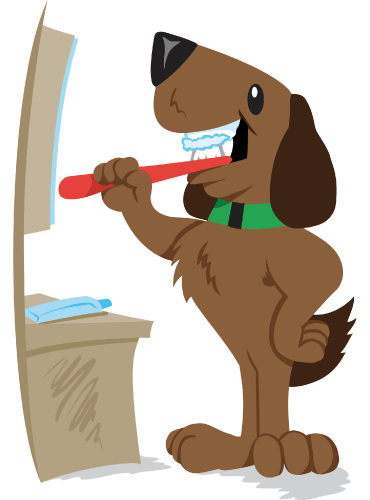
Dogs and cats have teeth typical of meat eaters. The teething of both begins at about three weeks of age, and at about 3.5 months they begin to change into permanent teeth. It is good to accustom the puppy to all kinds of handling, including the checking of teeth and the mouth. Milk teeth, especially the milk canines of small dogs, do not always fall by themselves but may stay in the way of the permanent teeth. The milk tooth has to fall latest when the permanent canine has grown to the size of the milk canine. If this does not happen, it is necessary to have the milk teeth removed by a veterinarian.
Different bones to chew help keep dog teeth healthy, but the best way to prevent tartar, inflammation of the gums and inflammation of the tissue which holds the teeth is their regular daily brushing. If brushing doesn’t happen and tartar forms, the pet has to be submitted to regular tartar removal. Tartar removal is carried out using a special ultrasound device when the animal is sedated.
Inflammation of the tissue which holds the teeth (periodontitis) will lead to teeth loosening / need to remove them. The so-called tooth-neck damage is also common in cats (resorption lesions, corrosion damage) which, when they reach all the way into the tooth core, cause pain. Such teeth must be removed.
Different accidents and damage may lead a tooth becoming chipped and consequently need root treatment and restoration, or removal of the tooth. These types of procedures are done under narcosis.
Much rarer than periodontitis or tooth chipping is the apparition of dental caries (tooth decay or cavitation) in a dog. Caries requires that the cavity be filled, or if it has gone very far, the most sensible thing to do may be to remove it.
A dog or cat does not know how to actually complain about toothache, so mouth problems have to be looked for and the health of the teeth should be monitored by the pet owner. A toothache may manifest itself as listless behaviour, changes in the way of eating, crankiness and other such symptoms.
The teeth of rodents, rabbits, hamsters, etc, grow throughout the lifetime of the animal. Teeth which have grown too long, or have worn unevenly and thereby formed sharp edges or spikes on teeth, make eating difficult, and may break the mucous membrane of the cheek and tongue and finally lead to the animal not eating at all. Dental problems are caused by the wrong food (for instance the lack of something hard to chew on) and teeth which are in the wrong position. Tooth spikes and molars which have grown too long are treated under anaesthesia. Front teeth which have grown too long can most often be cut when the animal is awake. If problems are caused by the wrong position of the teeth, with the teeth growing all the time new spikes may become a problem really quickly, even in one month.
Contrast medium imaging is also done for animal patients. With the aid of contrast medium investigation we look for, among other things, intervertebral disc problems, inflammations, tumours, wounds or structural flaws, which can be cured with medicines or surgery or at least try to alleviate the day to day life of your pet. With an orally administered contrast medium we clarify the structure and functioning of the oesophagus, stomach and intestines, and we can also look for foreign bodies with this procedure.
Administering the contrast medium orally is often a messy job, because the contrast liquid easily flows out from the sides of the mouth of the cat or dog and along its fur into the environment. Imaging the intestines takes several hours, because the contrast medium has to reach the large intestine during the imaging. For this procedure it is not necessary to sedate the animal.
With the contrast medium administered intravenously we investigate the structure of the kidneys, ureter, bladder and urethra. For clarifying problems of the bladder it is also possible to use a catheter to put the contrast medium directly into the bladder. Kidney contrast medium imaging is usually over in a couple of hours, but before going home the patient has to wake up from narcosis.
In contrast imaging of the spinal cord the contrast liquid is injected directly into the spinal canal and after this procedure the patient may feel nauseous, and will have to wake up at the clinic before going home.
The length of the fast to be done before the contrast medium investigation will be determined by the condition of the patient at that time. The general rule though is that the intestines, especially the large intestine, should be empty during imaging. The pre-imaging fast is usually 24 hours.
Heart diseases are very common in cats and dogs. In dogs the most common ailment is symptomatic heart failure resulting from degenerating heart valve/valves. This ailment is common especially in middle-aged or old individuals of small breeds (for example: cavalier King Charles Spaniel, Dachshund, Miniature Schnauzer). One may suspect a valve problem when you can hear a cardiac murmur in an aging dog. Heart muscle diseases or cardiomyopathies are common in big dogs (Irish wolfhound, Boxer, Doberman), but cocker spaniels also present cases of heart muscle illness.
Congenital heart ailments are discovered every now and then. The most common heart disease in cats is the so-called hypertrophic cardiomyopathy or illness resulting from the thickening of the heart muscle. In some cats it is congenital (Maine Coon cats), in old cats it may be hyperthyroidism and in some cats the cause is unknown.
Heart problem symptoms are, among others, lowered resistance in physical activity, cough (dogs), exceptionally strong panting, apathy, stomach swelling and weight loss. Sometimes the symptoms of symptomatic heart failure begin little by little, and the owner thinks that the fatigue and apathy are due to old age. Because of this it is recommended that aging animals be taken to a health inspection annually, so that possible heart murmurs or arrhythmia may be detected. If during a vaccination or other visits the veterinarian, when listening to the heart detects an arrhythmia or a strengthening of the murmurs, or in a cat murmurs are identified for the first time, then there is a reason to book an appointment for a heart examination.
When an animal comes in for a heart examination, it first undergoes a general examination, where its general condition is looked at, the colour of its mucosa is seen and its heart is listened to. When listening to the heart, if a murmur is heard, its strength and location (front chamber valves area or pulmonary artery valve area) are ascertained. Any changes in the rhythm of the heart are also established. The heart beat is measured and the pulse taken. An X-ray of the thoracic cavity is taken to look for accumulation of liquids in the lungs. An X-ray can also determine whether there has been any change in the size of the heart (due to a valve disorder the left atrium often becomes bigger).
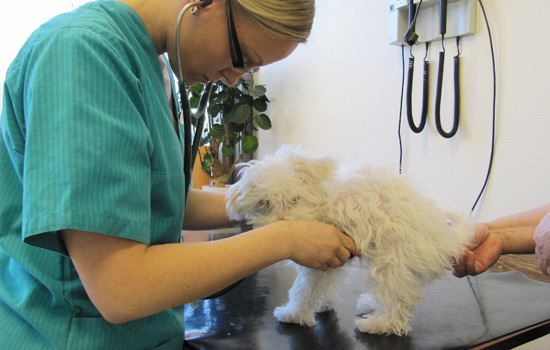
An electrocardiograph (ECG) is used to ascertain arrhythmia, which are usually present in heart muscle diseases. It is also used to see if there is a lack of oxygen in the heart muscle (blood circulation disturbances in the heart muscle) and whether there is any enlargement of the left or right side of the heart. The electrocardiograph is very important for the diagnosis of heart muscle disease (cardiomyopathy). With the ultrasound the size of the atriums and chambers and the thickness of the heart muscle are measured. With these measurements it is possible to determine the “ability to contract” of the heart, which gives a picture of its pumping power. Often blood samples will be taken from the heart patient in order to clarify among other things the functioning of its liver and kidneys. If it is suspected that an old cat has heart muscle disease, the thyroid hormone level must always be assessed.
Animal medication is decided based on the examination results. A patient suffering from a mild valve defect will usually be alright for a long time only on blood pressure medicine, but for instance in cases of cardiomyopathy in Dobermans, the care is begun immediately and aggressively with various different medicines. In cats hyperthyroidism leading to heart muscle disease is cared for primarily with a medicine which depresses the activity of the thyroid gland. Prior to a heart exam it is advisable to make the animal fast for 12 hours mainly because blood samples may be taken. Other instructions are given when booking an appointment. If the animal has been examined and treated at another clinic/s, it is advisable to take along any X-rays, electrocardiograms and information on medication.
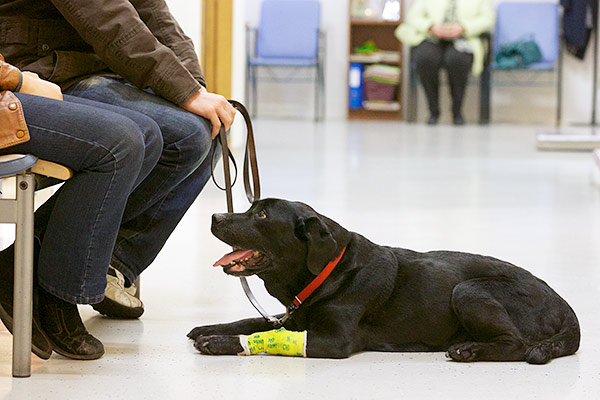
Blood sample
Except for hormone investigations, Koira-Kissaklinikka offers complete laboratory services. If it is suspected that the patient has a dysfunction of the inner organs, an infection or a tumour, a blood sample will be taken for testing. As needed, a so-called small or a complete blood count will be taken from the sample.
Inflammatory cell and differential blood cell counts, enzyme and serum value results, and also the thyroid hormone level are known the next working day, or in urgent cases already on the same day. The clinic uses so-called rapid tests to determine cat FIV and FeLV, and also to check for Lyme disease and ehrlichiosis values.
When investigating immunological diseases, for example the ANA antibodies, rabies antibodies and Leishmaniasis-titres are assessed in Sweden and Germany, and the results arrive in about 1-2 weeks. Hormone assessments take place at the Vetlab in Tampere, as well as progesterone assessments for establishing mating and artificial insemination times. Results are already available on the next working day. Some special assessments, such as pancreas lab values may take 1-2 weeks at the Tampere Vetlab.
The pet has to fast before a blood sample is taken, because the fat in the serum interferes in many analyses and distorts results. In general it is not necessary to sedate the patient for sampling and the fast is mentioned when booking the appointment. Eventual continued care and medication are decided on based on the test results.

Urine sample
Urine tests are done for the patient, for instance when investigating the reasons for lower abdominal area pains or difficulties in urinating, when the suspects are metabolic illnesses or inflammation. From the urine sample we routinely get the urine specific gravity and do a rapid test for sugar, ketone bodies, blood, protein and nitrate content.
In the sediment test we investigate crystals and cells. The bacterial culture grows overnight in an oven and an eventual positive sample is always made, and also a sensitivity to antibiotics assessment.
Kidney stone analysis usually takes about a week. When necessary the urine sample can be sent to Vetlab for the protein/creatinine ratio assessment. Urine samples are taken from dogs without any bigger problems, but if necessary the sample may be taken at the clinic, however in this case the animal has to be sedated.
Stool sample
Stool samples may be investigated both for domestic parasites as well as for more exotic parasites especially in the case of imported dogs. The stool sample is collected by the owner at home, and a trustworthy result requires samples on three consecutive days.
Ear sample
For ear samples we use a microscope to look for eventual ear mites and for bacterial and yeast infections. Ear infection treatment is directly linked to the cause and because of this the sample is checked again for each infection. When a bacterial infection has lasted a long time, a bacterial culture of the ear is also done, of which a sensitivity to antibiotics assessment will be made.
Back and bone marrow sample
The clinic is ready to also take back and bone marrow samples. These cannot be done under sedation, but require deep narcosis.
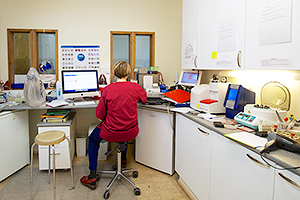
Taking X-rays is almost the most important basic examination procedure for the diagnosis of small-animal bone and joint and chest and stomach cavity illnesses. X-rays are also used to clarify internal injuries of accident victims. Nose cavity, teeth and inner ear structure X-raying are routinely done at our clinic. The so-called official hip and elbow joint X-rays are done on dogs to find disorders in hip and elbow joints which developed while the animal was growing up.
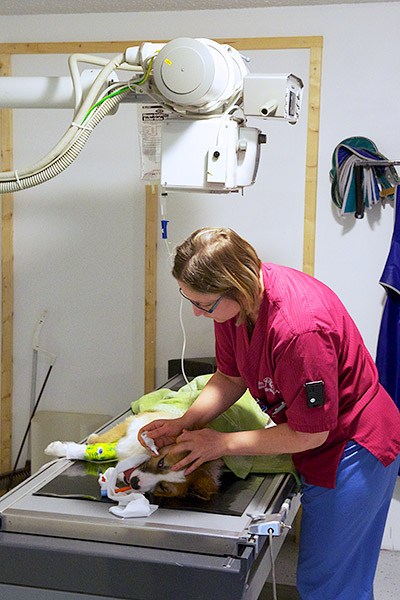
Mostly we take X-rays of dogs and cats, but it is also possible to take X-rays of rabbits, guinea pigs and turtles. For taking X-rays of the chest and stomach cavities the animal is usually not sedated or anesthetized, but for bones and joints (also the official hip and elbow joint) X-rays it is necessary to anesthetize it in order to get as high quality pictures as possible. Because of the narcosis the animal cannot eat for 12 hours and should be taken out for a really long walk before coming to the clinic.
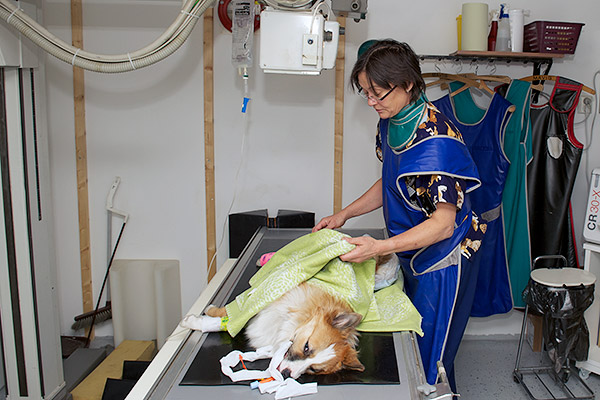
The equipment used for the X-rays is identical to the ones used for humans, and the same rules apply for the procedure. All the people who help to take the pictures must wear a lead vest and a thyroid protector. Pregnant women and people under 18 years of age are not allowed to help. The digital X-ray we use shows the pictures on the screen almost immediately and the treating veterinarian can comment on the findings. When necessary we use the expertise of other veterinary medicine specialists, for example to help evaluate joint and back pictures.
Official hip and elbow joint pictures are sent to the Finnish Kennel Club for their opinion. Their results will be sent COD directly to the owners’ home in a couple of weeks.
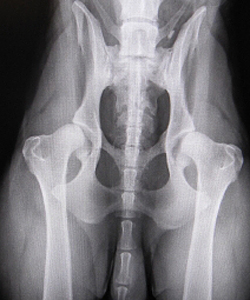
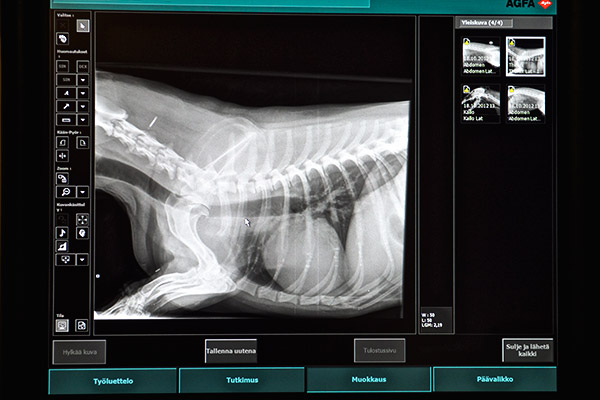
 Precise and current information about the import and export of animals can be found on the Evira (Finnish Food Safety Authority) pages at https://www.evira.fi/en/animals/import-and-export/
Precise and current information about the import and export of animals can be found on the Evira (Finnish Food Safety Authority) pages at https://www.evira.fi/en/animals/import-and-export/
Water therapy is an excellent form of rehabilitation which is suitable for almost all dogs. Water therapy is especially good for:
- dogs with joint and back problems
- those recovering from injuries and surgery
- sport dogs
- weight watchers
Exploiting the properties of water by running on a treadmill in the water will bring, among others, the following benefits:
increase in the range of movement of joints
decrease the load on joints even up to 80%
makes it possible to re-learn how to walk normally, for instance after surgery
- strengthen muscles
- improve the fitness of the breathing and blood circulation systems
- improve motor functions
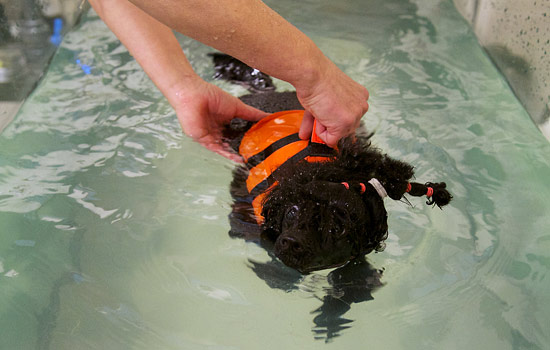
In addition to the water treadmill the rehabilitation will, as necessary, use other therapeutic practices and manual handling such as massage and mobilisation.
For sports dogs the water treadmill is a good training method because through exploiting the properties of water you can:
- strengthen muscles
- decrease the load on joints even up to 80% (good counterbalance for certain types of training, eg. agility)
- improve the fitness of the breathing and blood circulation system
- develop motor functions, strength and endurance
Even the fittest dogs feel that walking in the water is physically more demanding when the resistance of the water grows as the speed of the treadmill is increased sufficiently. Water therapy is also a good training method when we want to prevent, for example the possible development of joint problems.
In addition sports and home dogs’ muscle maintenance (massage, stretching).
Inquiries and booking at the reception.
We prefer to do group inspections at our clinic towards the end of the week. For a group inspection it is enough if there is a group of three dogs, and in the case of a big breed we prefer to do the group X-rays for smaller groups.
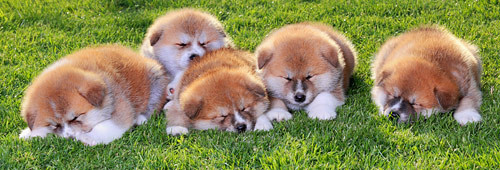
Before coming in for a group inspection we would like to receive the following information:
Owners’ first and last name, address and telephone number and the dogs’ registry book/copy of registration, or in writing:
- official name
- sex
- date of birth
- breed
- colour
- registration number
- microchip / tattoo number
- sire’s registration number and name
- dam’s registration number and name
In the last few years the amount of exotic animals kept as pets has grown at a rapid pace. Exotic pets include: rabbits, guinea pigs and other rodents, snakes, turtles, ferrets and reptiles, and birds in cages. New species, the popular prairie dogs, chipmunks and pygmy hedgehogs are part of these patients. Even so, exotic animals as pets and patients are still rarer than dogs and cats.
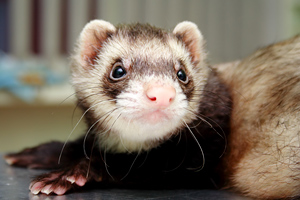
An exotic animal as a patient is often a challenge and brings up the need for information different from dog and cat patients. This is because we still know little about their normal needs and illnesses and there is little knowledge and it’s difficult to find. But little by little knowledge increases, and today we routinely care for rabbits, guinea pigs and the more common rodents at our clinic. Turtles and traditional caged birds also belong to our patient roster. Rabbits and rodents have a lot of skin problems, and the ailment and symptoms usually derive from ectoparasites.
The dental problems of rabbits, guinea pigs and hamsters are becoming more common, and for this reason we get a lot of patients with tooth problems at the clinic. Almost without exception this care is given under sedation.
More common surgical procedures such as the castration and sterilization operations on rabbits and guinea pigs, and removal of tumours, are done almost daily.
The risk of narcosis to exotic animals must be remembered and this is always mentioned when a time is being booked. These pets are more sensitive to narcosis than dogs and cats, and therefore they require precise and experienced handling at the clinic, during and after the procedure, until the patient has woken up properly and therefore is ready to go home.
In relation to narcosis it is important to especially take care to maintain the patient’s body temperature. When the patient goes to the post-op room we take care that the patient is regularly turned from one side to the other, so that it breathes with no difficulty. Give food and water when the patient begins to awaken. This is then different from the care dogs and cats get when waking from narcosis.
We try to keep exotic patients at the clinic on operation day for long enough to ensure that they wake up properly from a procedure that required narcosis, and only then are they ready to go home.
When booking a time we advise the owner about the special needs of the patient. Whether it is minus 20 degrees or 30 degree heat, according to the situation it has to be made sure that for these ‘sensitive’ patients it will be as safe as possible to travel to the clinic for care.
For an exotic patient a time should be booked immediately if and when the first symptoms appear. With these patients it is not possible to wait for a few days at home and see how the symptoms develop, because more often than not possible medication and support care has to begin immediately, because otherwise it may often be too late!
